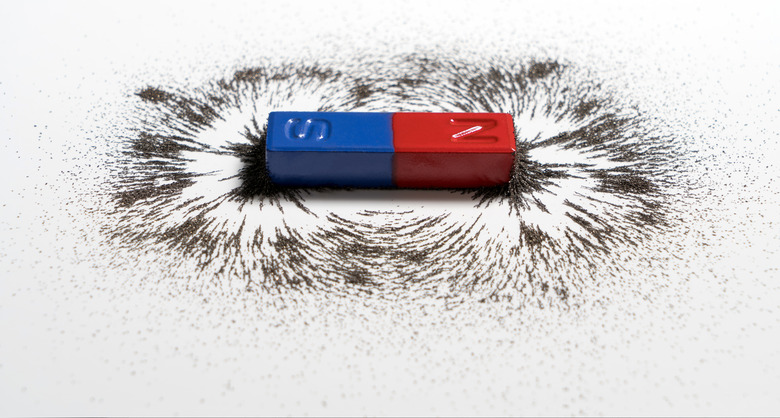What Causes Things To Get Magnetized?
Many people take magnets for granted. They are everywhere from physics laboratories to compasses used for camping trips to souvenirs stuck on refrigerators. Some materials are more susceptible to magnetism than others. Some types of magnets, such as electromagnets, can be turned on and off while permanent magnets produce a steady magnetic field all the time.
Domains
Domains
All materials are made up of magnetic domains. These are tiny pockets that contain atomic dipoles. When these dipoles become aligned in a single direction, the material exhibits magnetic properties. Iron in particular is an element whose dipoles are easily aligned. In other materials, dipoles can be aligned within a domain but not with respect to other domains in the same piece of material. These domains can be detected using a process called magnetic force microscopy. When a material is placed in a strong magnetic field, its domains will align and the material itself will become magnetized. Not all domains must be aligned for magnetism to be achieved.
Electricity
Electricity
Exposure to an electric current is another way to align magnetic domains. When two wires have an electric current running through them, there will be a magnetic attraction between them if the currents run in the same direction. The wires will repel each other if their currents are in opposite directions. Earth is a magnet that is produced by electric currents in the planet's molten core, though National Aeronautics and Space Administration scientists continue to search for the source of these currents.
Ferromagnetism
Ferromagnetism
Ferromagnetism is a phenomenon that occurs in some metals, most notably iron, cobalt and nickel, that causes the metal to become magnetic. The atoms in these metals have an unpaired electron, and when the metal is exposed to a sufficiently strong magnetic field, these electrons' spins line up parallel to each other. This is why iron cores are used in electromagnet solenoids and transformer windings. The electric current creates a magnetic field that is amplified by the iron core's induced magnetism.
Curie Temperature
Curie Temperature
Materials remain magnetic at temperatures lower than the Curie temperature. This temperature is different for various metals and describes the point at which the long range order of magnetic domains disappears. The long range order is what holds the magnetic domains in a particular orientation. Higher Curie temperatures mean that more energy is required to disorient a material's magnetic domains. When the temperature drops below the Curie temperature and the material is placed in a magnetic field, it will become magnetic again.
Cite This Article
MLA
Leenhouts, Doug. "What Causes Things To Get Magnetized?" sciencing.com, https://www.sciencing.com/causes-things-magnetized-8340740/. 13 March 2018.
APA
Leenhouts, Doug. (2018, March 13). What Causes Things To Get Magnetized?. sciencing.com. Retrieved from https://www.sciencing.com/causes-things-magnetized-8340740/
Chicago
Leenhouts, Doug. What Causes Things To Get Magnetized? last modified August 30, 2022. https://www.sciencing.com/causes-things-magnetized-8340740/
